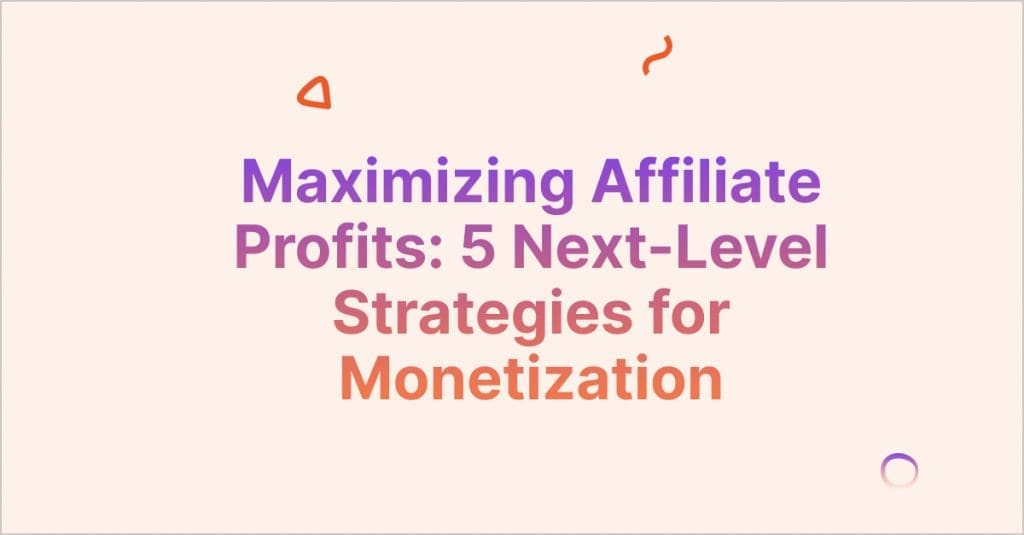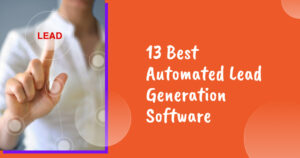If you’re running an online store, chances are you have a decent amount of affiliate traffic flowing through your website from working with affiliates or influencers who passionately promote your brand.
But are you satisfied with the conversion rates of your affiliate traffic? If not, keep on reading because we’re going to bring you five essential strategies to amp up your affiliate marketing campaigns.
Let’s dive in!
What is affiliate marketing?
Firstly, let’s discuss what is affiliate marketing.
Affiliate marketing is a performance-based marketing strategy in which advertisers (or merchants) enlist affiliates (or publishers) to promote their products or services in exchange for a commission.
Affiliates promote these offerings through various online channels, such as websites, blogs, social media platforms, or email newsletters, using unique tracking links or codes provided by the advertiser.
When consumers make a purchase or perform a desired action (such as buying a product) through the affiliate’s referral, the affiliate earns a commission.
This collaborative arrangement allows advertisers to expand their reach and increase sales, while affiliates can monetize their online presence and audience engagement.
How does affiliate marketing work?
At its core, affiliate marketing involves three primary actors: the advertiser, the affiliate, and the consumer.
Here’s how the process typically unfolds:
The advertiser: Also known as the merchant or vendor, the advertiser is the entity that creates or sells a product or service. They enlist affiliates to promote their offerings in exchange for a commission.
The affiliate: Affiliates can be individuals or companies that promote products or services through various marketing channels, such as websites, blogs, social media platforms, or email newsletters. They earn a commission for every sale, lead, or action generated through their unique affiliate link or promotional code.
The consumer: Consumers are the end-users who engage with affiliate marketing content and ultimately make a purchase or perform a desired action. They may come across affiliate links embedded within blog posts, social media posts, product reviews, or other promotional materials.
Why is it important to focus on optimization in affiliate marketing?
Now that you understand the basics, let’s address the importance of optimization to have a successful affiliate marketing program.
A well-optimized affiliate marketing strategy creates a positive cycle of success. When you improve the conversion rate of your website, it not only benefits your own customer acquisition efforts but also translates into higher commissions and increased sales for your affiliates.
Essentially, this means more revenue for both you and your affiliates, attracting even better affiliate partners to join your program through the adept management of the affiliate link manager.
However, it’s crucial to understand two fundamental rules of affiliate marketing.
Firstly, affiliate marketing will only work if you can sell your products or services effectively yourself. Many novice merchants mistakenly believe that relying on affiliate traffic is a cost-effective alternative to running their own paid advertising campaigns.
While affiliates can indeed help you save on advertising costs, they won’t send traffic your way if your website is ineffective at converting visitors into customers.
The second rule is that affiliate partners are for scaling your business, not for fixing a leaky sales funnel. If your conversion rates are low, regardless of the traffic source, affiliate marketing won’t yield the desired results.
To successfully run affiliate marketing, it’s imperative to fix any issues with your sales funnel and ensure your website can profitably convert visitors into customers.
Once this foundation is solid, you can start employing strategies to optimize your affiliate marketing efforts.
How to make money with affiliate marketing: 5 key optimization strategies
Now, let’s explore five tactics that will help you turn your affiliate traffic into profits, complete with real-life examples.
1. Tailor landing pages to affiliate partners
If your affiliate partners—especially influencers—are sending traffic to your website, they’re usually leveraging their reputation. This means that customizing your landing pages to acknowledge the affiliate partner’s influence can significantly improve conversion rates.
Highlighting the partner’s name or featuring their logo prominently on your landing page creates a more appealing and relevant experience for visitors referred by them.
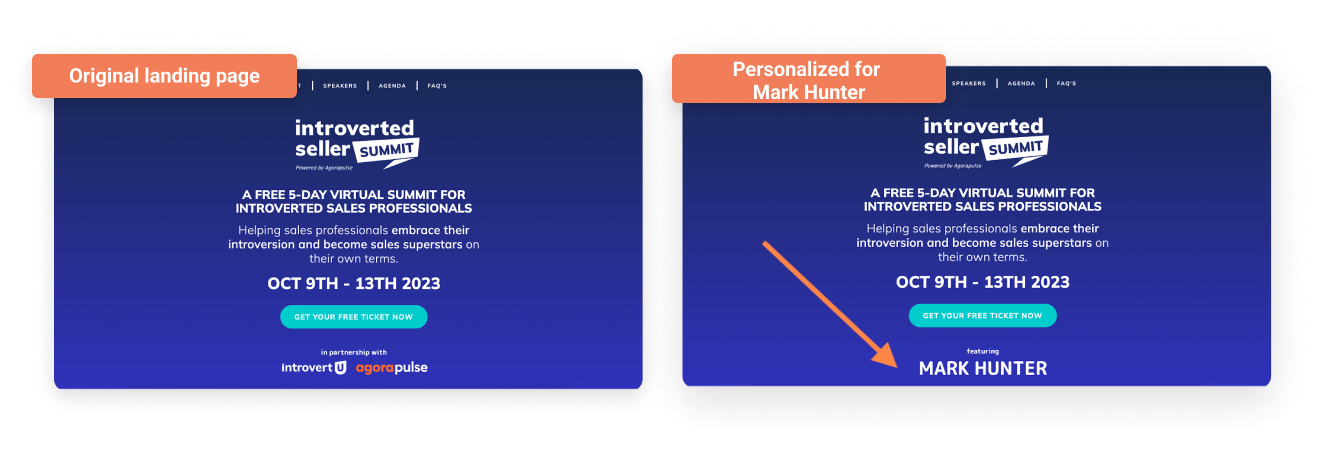
2. Implement personalized popups
You can also use personalized welcome or exit popups to reinforce the affiliate partner’s contribution.
Acknowledge the affiliate partner by name and offer incentives or bonuses tailored to their audience.

3. Provide special offers and incentives
Elevate your affiliate marketing strategy by introducing attractive promotions and incentives. Consider providing exclusive rewards, such as ebooks or discounts, to entice your audience.
To make these efforts stand out even more, tailor them for visitors who come through specific affiliate partners. This personalized approach can significantly boost your affiliate program’s effectiveness.
In the example below, friends referred by Ezra Firestone receive a significant discount.

Another example of a strong incentive displayed on a sticky bar comes from Introverted Sellers Summit.
By placing your offer on a sticky bar and highlighting the name of the affiliate, you can make your offer even more relevant for users.

Lastly, here’s how BlendJet promotes a special offer on a sidemessage for visitors coming from an influencer.
Check out how they used their profile picture and Instagram handle to make it even more personalized

They received more than 6,000 impressions on this campaign and saw a 30.42% conversion rate.
4. Leverage A/B testing
When it comes to having a successful affiliate marketing program and improving affiliate conversion rates, there are a few key aspects worth delving into.
One such aspect is A/B testing, a widely adopted method in conversion optimization.
If you’re managing landing pages, conveying unique selling propositions, or experimenting with various ad value propositions, having a finely tuned landing page is crucial.
A/B testing stands out as the go-to technique for optimizing conversion rates. Despite your marketing prowess and ability to craft compelling copy, relying on intuition alone can only take you so far. You might be able to brainstorm around ten different headlines or sub-headlines that feel right, but choosing the perfect one will still be guesswork without A/B testing.
In the past, A/B testing was a time-consuming manual process. But now, you can fully automate the process with Smart A/B Testing, which allows you to experiment with different elements on your landing pages, such as headlines, images, and copy, to determine what resonates best with your audience.
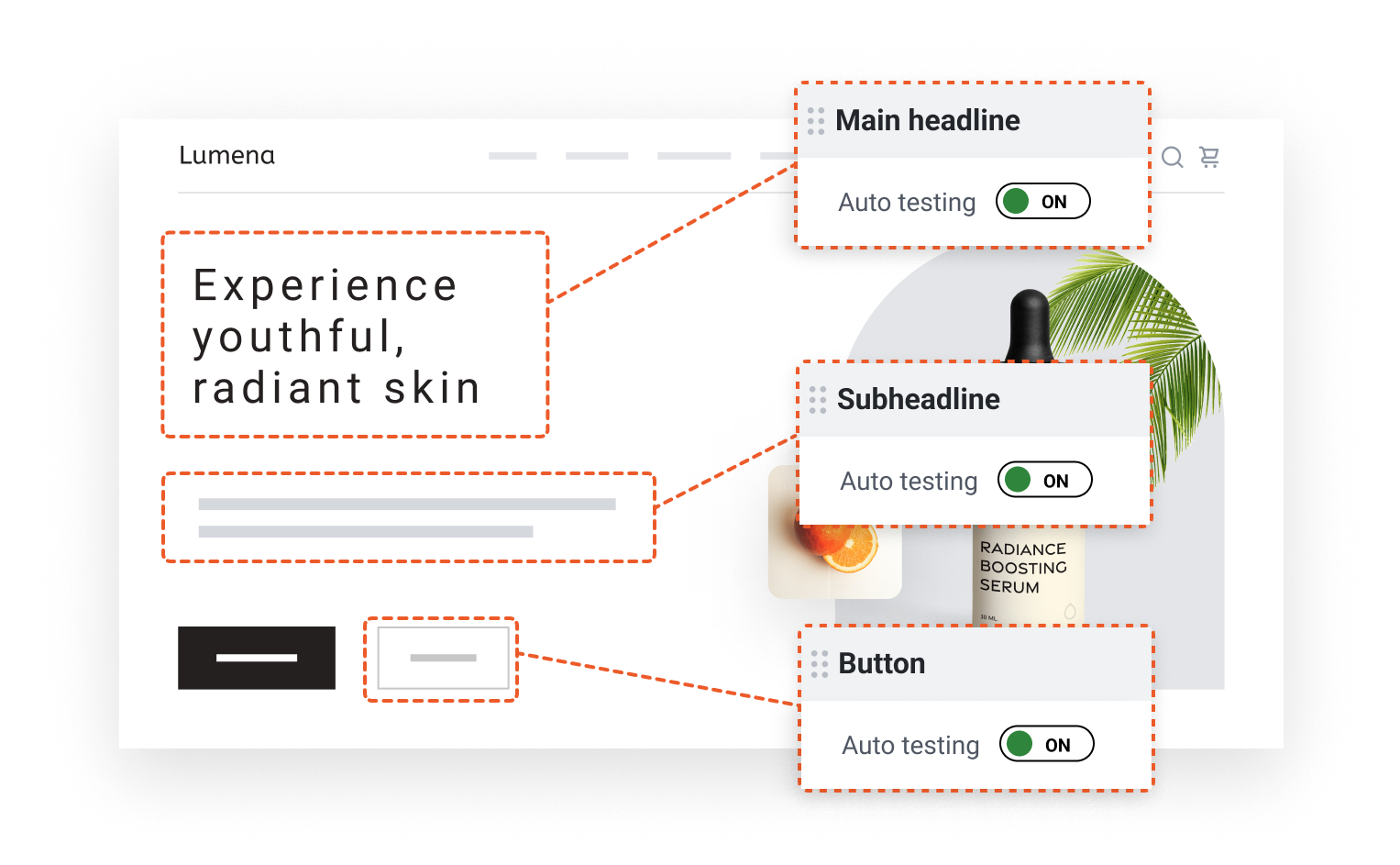
If you’d like to give automated A/B testing a try, sign up for a demo now.
5. Implement product page optimization
For ecommerce merchants, the lion’s share of traffic might arrive directly on their product pages. In practice, these product pages function as sales pages. But manually optimizing product pages—if you have thousands of them—is simply unsustainable.
Smart Product Page Optimizer automates this process, allowing you to create compelling product descriptions and layouts for each product, thus improving conversion rates across your entire catalog.
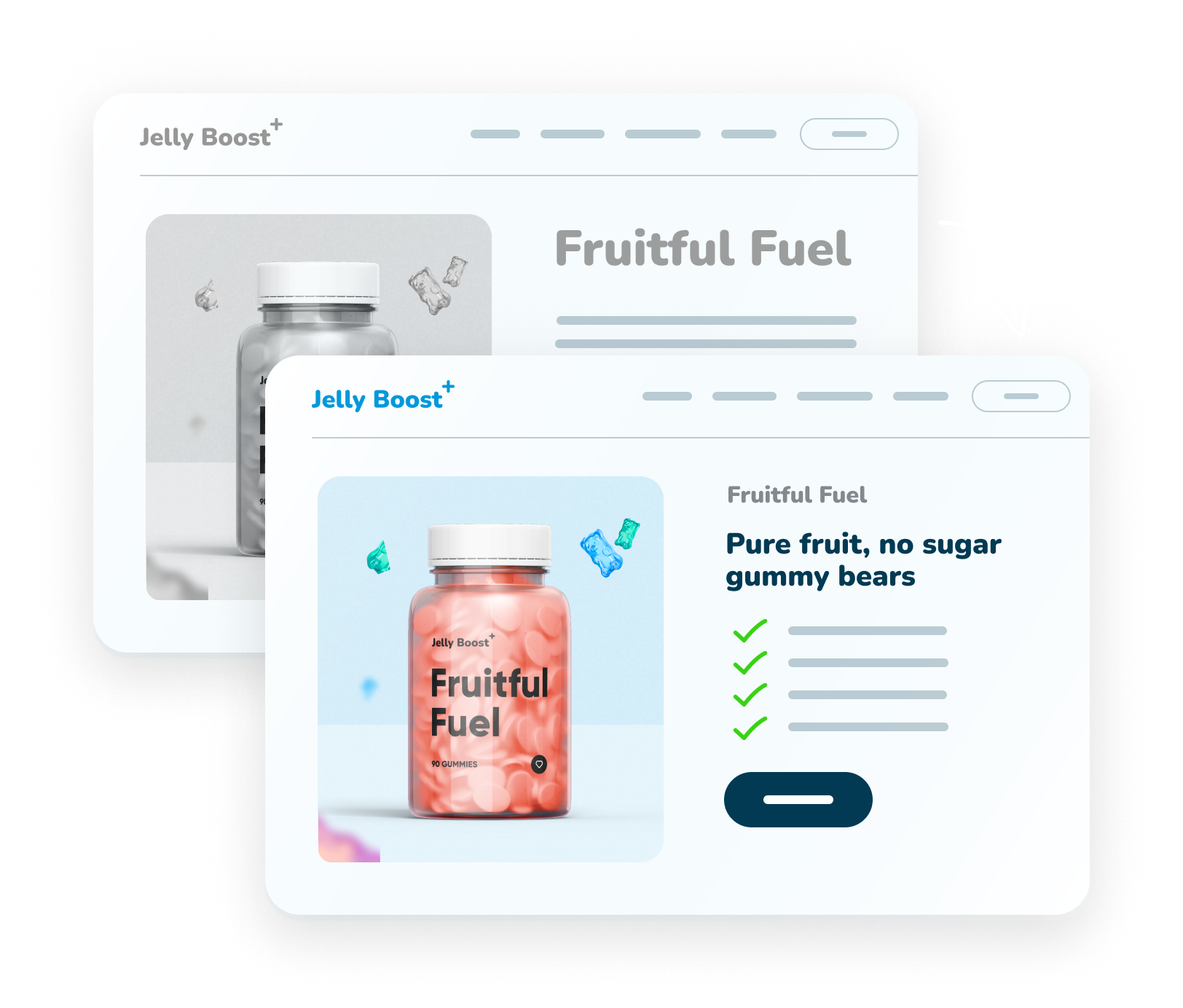
FAQ
What are some effective promotional strategies for affiliate marketers?
Effective promotional strategies for affiliate marketers include content marketing, SEO optimization, social media marketing, email marketing, and influencer partnerships. Create valuable content such as blog posts, product reviews, and tutorials to promote affiliate products. Or leverage platforms like Instagram, Facebook, and Twitter to share affiliate links and engage with the audience.
How can I optimize my affiliate marketing efforts?
To optimize affiliate marketing efforts, it’s crucial to track performance, experiment with different strategies, focus on quality over quantity, and optimize conversions.
What are some common mistakes to avoid in affiliate marketing?
Common mistakes in affiliate marketing include promoting irrelevant products or services to your audience, neglecting disclosure requirements (disclosing your affiliate relationship), relying solely on one promotional channel, spamming or engaging in unethical marketing practices, and not diversifying your income streams.
How long does it take to have a successful affiliate marketing program?
The timeline for achieving success in affiliate marketing varies depending on various factors. While some affiliates may see results relatively quickly, for others, it may take several months or even years to build a successful affiliate program. Consistency, patience, and ongoing optimization are key to long-term success.
Is affiliate marketing suitable for any ecommerce store?
Affiliate marketing can be suitable for many ecommerce stores, as it provides an additional revenue stream without the need for significant upfront investment. However, the suitability of affiliate marketing depends on factors such as the niche, target audience, and product offerings. Ecommerce stores should carefully consider their goals, resources, and target market before implementing an affiliate program. Additionally, maintaining transparency and building relationships with affiliates are essential for affiliate marketing success for ecommerce stores.
Closing thoughts
Optimizing your affiliate marketing strategy is essential for achieving mutual success with your affiliates. Remember, your website should convert visitors effectively and affiliates should help scale your business.
Let’s recap the five key strategies we covered today:
- Tailor landing pages for affiliate partners: Highlight their influence on your landing pages to enhance relevance and appeal.
- Implement personalized popups: Use personalized popups to acknowledge affiliates and offer tailored incentives, creating a sense of exclusivity.
- Provide special offers and incentives: Elevate your strategy with enticing promotions, bonuses, and rewards for visitors from specific affiliates.
- Leverage A/B testing: Use the power of AI, and forget the manual hustle of traditional A/B testing.
- Implement product page optimization: Turn your product pages into high-converting sales pages with the help of Smart Product Page Optimizer.
Start maximizing your affiliate profits today with these 5 next-level strategies and watch your conversions grow!
